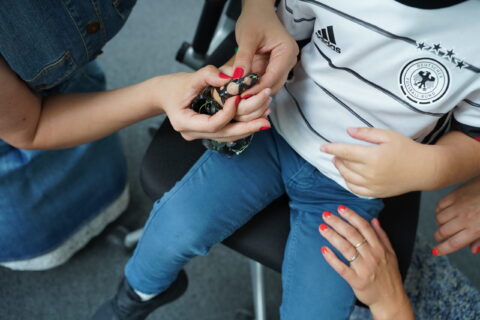European Research Council funds pioneering FAU project in the field of neuromechatronics

Children who cannot move their hands, for example after suffering a stroke at a young age: Scientists from the Neuromuscular Physiology and Neural Interfacing Laboratory (N-squared Lab) at Friedrich-Alexander-Universität Erlangen-Nürnberg (FAU) hope that impairments such as these will soon belong to the past. Following the remit of the “PlayAgain” project, the working group led by ESI-Member Prof. Dr. Alessandro Del Vecchio hope to develop a neural interface that can strengthen or re-establish connections between the brain and the lower arm muscles from the paralyzed hand. The FAU team has now received 150,000 euros in funding from the European Research Council (ERC).
The funding is an important step towards the team led by neuroscientist Prof. Dr. Alessandro Del Vecchio being able to help children (and adults) to move a disabled hand again and even to be able to grasp objects with it. It follows on from the basic research conducted at FAU by the N-squared Lab at the Department of Artificial Intelligence in Biomedical Engineering in the area of neuromuscular physiology that has already been recognized by the ERC. The working group focuses on the question of how the brain controls muscles, and investigates sensorimotor interfaces for paralyzed people.
You can find further information at FAU’s Blog.
Prof. Dr. Alessandro Del Vecchio
Department Artificial Intelligence in Biomedical Engineering (AIBE)
W3-Professur für Neuromuscular Physiology and Neural Interfacing
- Phone number: +49 9131 85-70940
- Email: alessandro.del.vecchio@fau.de
